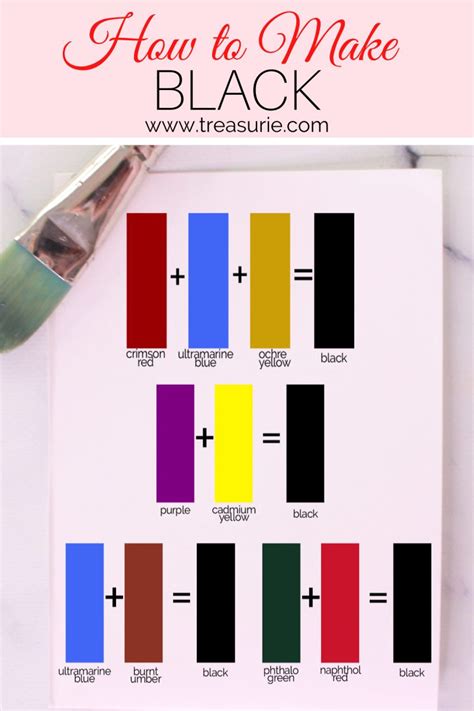How to Make Black: A Guide to Achieving the Perfect Black in Art and Design
Creating the perfect black can be surprisingly complex, depending on your medium. It's not just about grabbing the blackest paint or ink you can find; understanding the nuances of color mixing and the desired effect is key. This guide will explore various methods for achieving a rich, deep black across different creative disciplines.
Understanding the Nature of Black
Before we dive into the "how-to," let's understand what makes a black "good" or "bad." A truly black black is the absence of all light, but in reality, most blacks have underlying tones. These undertones can dramatically affect the final result, making a black appear muddy, dull, or surprisingly vibrant.
The Importance of Undertones
Depending on the pigments used, a black can lean towards blue, brown, green, or even red. These undertones are influenced by the pigments used to create the black. For example, mixing black from primary colors (cyan, magenta, yellow) often results in a different shade than using a pre-mixed black pigment. Understanding these undertones is vital in achieving the specific black you need for your project.
How to Make Black in Different Mediums
The method for achieving black varies dramatically depending on your chosen medium. Here are some common methods:
1. Making Black with Paints
Acrylics: Mixing primary colors (cyan, magenta, yellow) theoretically produces black. However, this rarely creates a true black; instead, it often results in a dark, muddy brown. It's generally better to use a pre-mixed black acrylic paint for consistent results. However, you can experiment by adding small amounts of other colours to modify the pre-mixed black. A touch of ultramarine blue can deepen it; a hint of burnt umber can add warmth.
Oils: Similar to acrylics, mixing primary colours doesn't produce a desirable black. Using a pre-mixed black oil paint is usually the best route. To adjust the tone, you could experiment with adding a touch of ivory black for a cooler tone or lamp black for a warmer one.
Watercolors: Watercolors are translucent, so achieving a truly deep black requires layering. Start with a light wash and gradually build up the darkness, using a mix of black pigment and perhaps a touch of Prussian blue or indigo for depth.
2. Making Black with Inks
Inks, especially for printing, often use specialized black inks formulated for specific processes. However, you can experiment with mixing inks to achieve different shades of black. Keep in mind that some inks may not mix well and could result in unexpected results.
3. Making Black in Digital Design
Digital design offers the easiest route to create black. Simply selecting the black color option in your design software usually provides a pure, true black. However, remember that screen resolution and color profiles can affect how the black appears on different displays.
Tips for Achieving a Rich, Deep Black
- Experiment with Undertones: Don't be afraid to experiment with adding small amounts of other colors to modify the black and create unique shades.
- Use High-Quality Pigments: Cheaper pigments may result in a duller, less vibrant black.
- Consider the Surface: The surface you're applying the black to can affect its appearance. A rough surface might appear darker than a smooth one.
- Lighting Conditions: The lighting conditions under which you view your work can drastically affect how the black appears.
By understanding the nuances of color theory and experimenting with different techniques, you can achieve the perfect black to suit your artistic vision. Remember, the "best" black is the one that best serves your project's needs and aesthetic goals.
